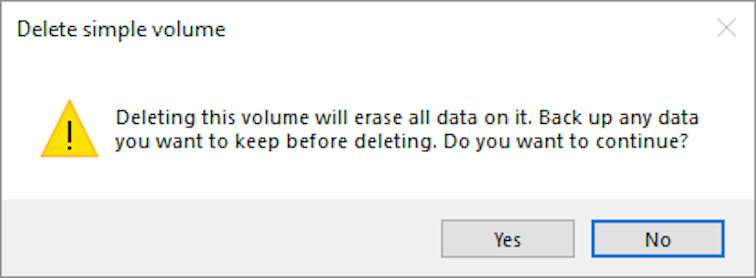Inadequate user interface designs in Windows 10 and macOS Mojave can cause accidental data breaches through inconsistent language, insecure default options, and unclear or incomprehensible information. Users could accidentally leak sensitive personal data. Data controllers in companies might be unknowingly non-compliant with the GDPR’s legal obligations for data erasure.
At the upcoming Annual Privacy Forum 2019 in Rome, I will be presenting the results of a recent study conducted with my colleague Mark Warner, exploring the inadequate design of user interfaces (UI) as a contributing factor in accidental data breaches from USB memory sticks. The paper titled “Fight to be Forgotten: Exploring the Efficacy of Data Erasure in Popular Operating Systems” will be published in the conference proceedings at a later date but the accepted version is available now.
Privacy and security risks from decommissioned memory chips
The process of decommissioning memory chips (e.g. USB sticks, hard drives, and memory cards) can create risks for data protection. Researchers have repeatedly found sensitive data on devices they acquired from second-hand markets. Sometimes this data was from the previous owners, other times from third persons. In some cases, highly sensitive data from vulnerable people were found, e.g. Jones et al. found videos of children at a high school in the UK on a second-hand USB stick.
Data found this way had frequently been deleted but not erased, creating the risk that any tech-savvy future owner could access it using legally available, free to download software (e.g., FTK Imager Lite 3.4.3.3). Findings from these studies also indicate the previous owners’ intentions to erase these files and prevent future access by unauthorised individuals, and their failure to sufficiently do so. Moreover, these risks likely extend from the second-hand market to recycled memory chips – a practice encouraged under Directive 2012/19/EU on ‘waste electrical and electronic equipment’.
The implications for data security and data protection are substantial. End-users and companies alike could accidentally cause breaches of sensitive personal data of themselves or their customers. The protection of personal data is enshrined in Article 8 of the Charter of Fundamental Rights of the European Union, and the General Data Protection Regulation (GDPR) lays down rules and regulation for the protection of this fundamental right. For example, data processors could find themselves inadvertently in violation of Article 17 GDPR Right to Erasure (‘right to be forgotten’) despite their best intentions if they failed to erase a customer’s personal data – independent of whether that data was breached or not.
Seemingly minor design choices, the potential for major implications
The indication that people might fail to properly erase files from storage, despite their apparent intention to do so, is a strong sign of system failure. We know since more than twenty years that unintentional failure of users at a task “is often caused by the way in which [these] mechanisms are implemented, and users’ lack of knowledge”. In our case, these mechanisms are – for most users – the UI of Windows and macOS. When investigating these mechanisms, we found seemingly minor design choices that might facilitate unintentional data breaches. A few examples are shown below and are expanded upon in the full publication of our work.
Continue reading How Accidental Data Breaches can be Facilitated by Windows 10 and macOS Mojave
